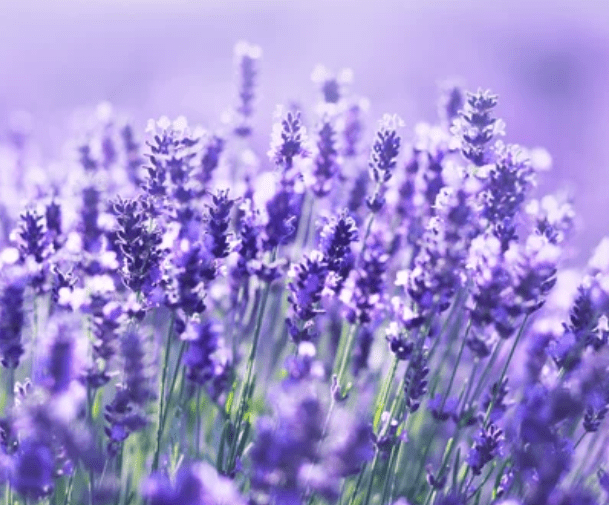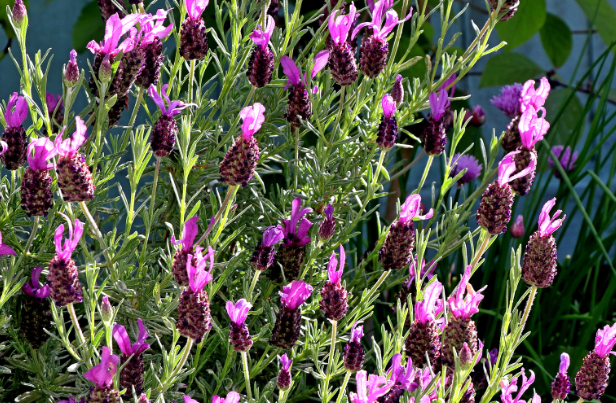
In the French Lavender vs. English Lavender debate, understanding their unique growing conditions and uses is paramount. French Lavender thrives in warm climates and has a lighter scent, while English Lavender loves cooler weather and offers a more potent fragrance.
Lavender is a popular herb widely cultivated for its aromatic flowers, essential oils, and culinary uses. But did you know there are different lavender, each with its characteristics, benefits, and drawbacks?
The two most widely known types of lavender are French and English lavender. We will look at their differences in appearance, hardiness, fragrance, bloom time, size, and more. By the end of this post, you will tell them apart and choose the best one for your garden or home.
Appearance
One of the easiest ways to distinguish between French and English lavender is by looking at their flowers. Both types have purple flowers that grow in spikes, but French lavender has showy petals at the tip of each end, while English lavender does not. The petals of French lavender can be purple, pink, or white, giving the plant a distinctive look. English lavender has less showy flowers but a sweeter and more appealing aroma.
English Lavender

French Lavender

Another difference is in their foliage. French lavender has gray-green leaves that are serrated or toothed along the edges, while English lavender has narrow, smooth-edged leaves that are silvery-green. You can use the aromatic leaves of both types for potpourri or sachets.
Hardiness
If you live in a cold climate, opt for English lavender over French lavender. English lavender is more cold-hardy than French lavender and can survive temperatures as low as -20°F or -30°C, provided the soil is well-drained. French lavender is only hardy to about 0°F or -15°C and needs to be brought indoors or protected during winter. Alternatively, you can grow French lavender as an annual and replace it every year.
Fragrance
Both French and English lavender are fragrant plants that can fill your garden or home with a pleasant scent. However, they differ in the intensity and quality of their fragrance. English lavender has a more pungent and classic lavender scent that is widely used for aromatherapy, perfumes, soaps, and candles. It also produces more essential oil than French lavender and has a higher quality oil more suitable for medicinal and culinary purposes.
French lavender has a more subtle and delicate scent reminiscent of rosemary. It produces less essential oil than English lavender and has a lower quality oil mainly used for landscaping and decoration. Some people may prefer French lavender’s softer scent over English lavender’s more aromatic scent, but it depends on your preference and purpose.
Bloom Time
The bloom time is another factor that sets apart French and English lavender. French lavender has one of the lengthiest bloom periods, beginning in spring and persisting through summer. It can produce flowers for up to four months, adding color and fragrance to your garden or home.
English lavender has a shorter bloom time, usually lasting from late spring to early summer. It can produce flowers for up to two months but may re-bloom in late summer or fall if dead-headed regularly.
Size
French and English lavenders also differ in their size and shape. French lavender is a larger and more sprawling plant than English lavender. It can grow from 2 to 3 feet tall and wide, making it suitable for borders, hedges, or mass plantings. We can also grow it in containers, but it may need regular pruning to keep it compact and tidy.
English lavender is a smaller and more compact plant than French lavender. It can grow from 1 to 2 feet tall and wide, making it ideal for rock gardens, edging, or containers. You can also prune it into neat mounds or hedges or shape it into topiaries or standards..
Conclusion
French and English lavenders are beautiful and valuable plants that enhance your garden or home with flowers, foliage, and fragrance. However, you should consider some crucial differences before choosing one over the other.
French Lavender vs. English Lavender
Below, I summarize their fundamental differences:
- French lavender has showy petals at the tip of each flower spike, while English lavender does not.
- French lavender has gray-green serrated leaves, while English lavender has silvery-green smooth-edged leaves.
- French lavender is less cold-hardy than English lavender and may need winter protection or indoor growing.
- French lavender has a more subtle scent than English lavender and produces less and lower quality essential oil.
- French lavender has a more extended bloom than English lavender and can flower for up to four months.
- French lavender is larger and more sprawling than English lavender and may need more space and pruning.


























